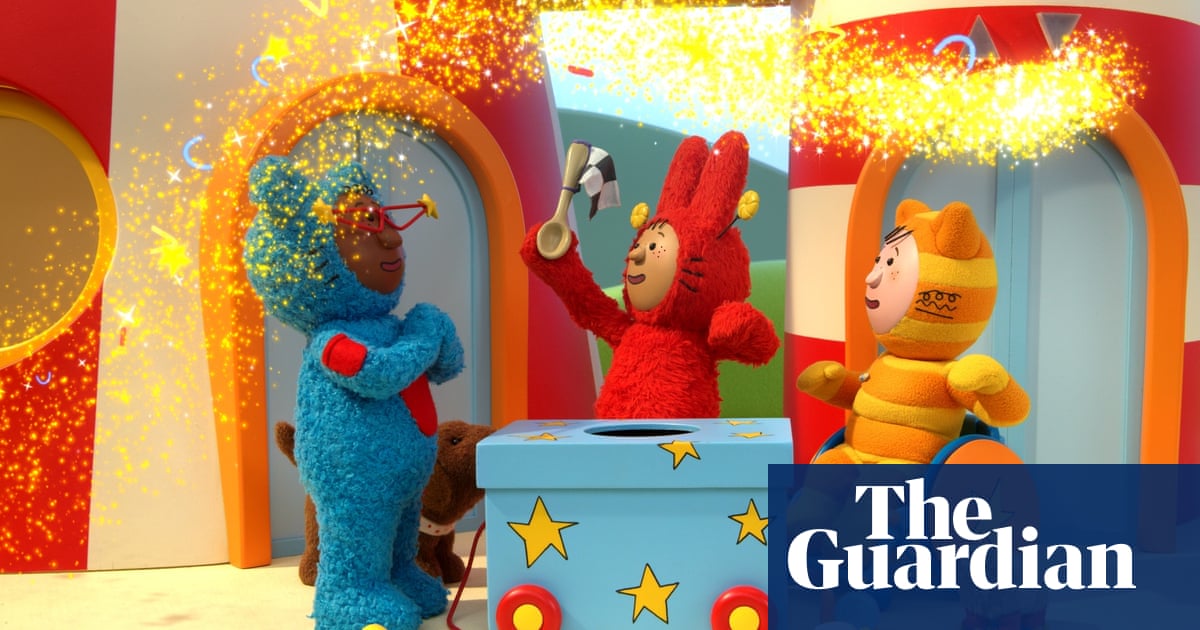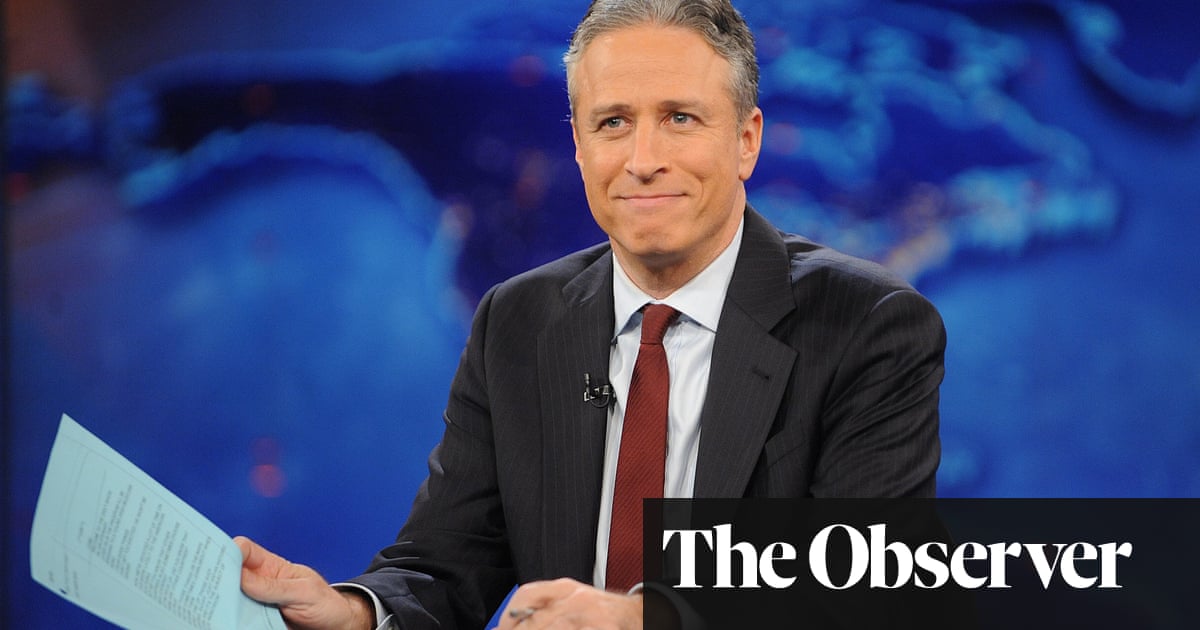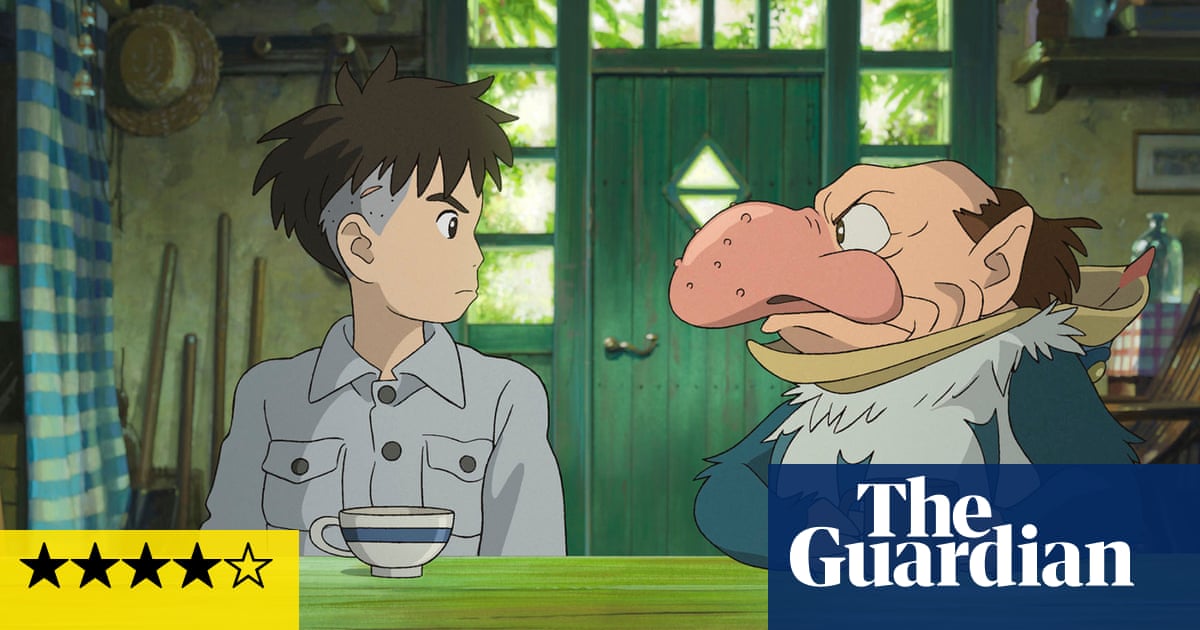
Seven years ago, I sat at my desk and asked myself some big questions. Could I devise a children’s TV show which bursts from screens like a candy store of creativity? One that is bright, sweet and funny, capturing the magic of play and the limitless ability of young children to transcend reality and disappear into their own imaginations? Could I play with the conventions of children’s programming – which had historically excluded 150 million disabled children worldwide – and draw on my own experience as a disabled person to create a world so tangible that little fingers would long to reach in beyond the screen and hold the cute stop-motion characters in their hands?
These questions led to the creation of Mixmups. It’s a new 52-part series about three friends – Pockets the bear, Giggle the cat and Spin the rabbit – who transport themselves on playful adventures along with their guardian, the comical trunk-beaked Lucky Loover Bird. Each episode begins with the friends cooking up an idea for play – to go to space for a moon cheese sandwich, find a magical library where all the books can talk or catch a lost dream in a jar so that they can remember it for ever. They place toys and objects into a blue mixing box, add some sparkles and, using their magical wooden spoon, “Mix up the magic” (of play and imagination) and get swallowed inside the box on an adventure.
The show – which is partly funded by the BFI’s Young Audiences Content Fund – is a celebration of children’s love of play, mixing things up and the power of imaginative transformation, but beneath the surface lie many considerations about how disability should be represented in children’s industries.
The idea for Mixmups started in 2015 when I was tidying my kids’ bedroom and noticed there were no representations of disability among their toys. I looked at Google but found nothing except pirates with one leg or grandparent figures using grey wheelchairs. I wondered why no one had played creatively with the aesthetics of disability in toys, why these figures were stuck in the dusty margins of design.
It didn’t seem right, so along with Karen Newell, a play consultant who had worked on children’s responses and research for Teletubbies, and mother of a son with visual impairment, we founded the Toy Like Me campaign to call on the global toy industry to do better. I began giving toys a makeover and put the images online. A picture of a Tinker Bell doll with a hot pink cochlear implant went viral. Parents asked to buy it. Deaf adults wished it had existed when they were young. I was soon approached to consult for a global toy brand, but when, after extensive consultation, I received designs of a blind character in stereotypical black glasses, I realised I was stuck in a never-ending cycle of disability misrepresentation. The only way to break it was to take a creative leap beyond everything that had existed before and create something completely new. Could I devise a format appealing enough to exist without mention of disability, then add disabled characters to enrich and deepen the premise?
I began by asking: what do all children have in common? The answer was an innate sense of wonder and the desire to play. Play is how children make the world intelligible. I geeked out on play theory, learning about play schemas – the building blocks of exploration in preschoolers – and how much kids learn from simple actions such as rotating wheeled toys, placing things in boxes, pushing baby dolls in buggies, mixing paint colours and connecting Lego.
Next, I found a writing mentor in children’s author Joyce Dunbar who taught me to be creatively open and see that the biggest obstacle to creativity is your inner critic. When children are very young they paint and draw without inhibition, scribbling and sloshing paint with little regard for the end product. Around the age of five, they begin to become conscious of the thoughts and judgment of others. This inhibits that young, unfettered joy of toddler creativity. Joyce taught me to abandon the self-critic and create like I was three again.
In time I began to conceive the Mixmups stories and world. I used the different styles in which children play to inspire each character; neat and tidy Pockets, creative and inventive Giggle, plus boisterous and physical Spin.
I took rough drawings and scrappy stories to The Children’s Media Conference in Sheffield, where chance led me to the people who would become the core production team for Mixmups – all of whom had lived experience of parenting disabled children or were supporting family members with health conditions. I started working with Mackinnon and Saunders – who created puppets for Tim Burton’s Corpse Bride, Wes Anderson’s Fantastic Mr Fox and Rastamouse.
I began talking to wheelchair-using children who wanted to see characters walking short distances and transferring to the sofa. They wanted to show that a wheelchair is a tool of enablement not confinement, and that the ability to walk is not binary. We honed the concept of magical access, where the world flexed for the characters, cupboards magically slid down to the right height and everything was within reach.
The children wanted to see characters with imperfect bodies so the puppet designers gave the character of Giggle some curvature of the spine. Her gait and range of movements is based on the physical parameters of just one child model, because every wheelchair-user is different.
Once we built Giggle’s body, we designed her wheelchair to fit her perfectly, and then created the Mixmups’ world to be fully accessible. Taking the ubiquitous playful structures of the British seaside, which is so frustratingly inaccessible to wheelchair-using children in real life, I gave the Mixmups a helter-skelter house with a lift, automatic doors, wheelchair accessible swings and a twirly cups roundabout inspired by the Norfolk seaside town of Great Yarmouth, close to my childhood home. The result is Mixington Valley, a fantasy space where barriers are removed and everything is open to all.
For the character of Pockets, who like me is partially sighted, I created Yapette, the dutiful guide dog. The animation team were trained in the foot positions and hand commands of a working guide dog partnership and the subtle body language of a child with a visual impairment, so we see Pockets’ little paws reach out to touch the environment around her or sweep the ground for obstacles with a tiny white cane. But like the visually impaired children we consulted, when Pockets is at home, she doesn’t use a mobility tool at all.
Production design was deliberately left uncluttered, with vibrant high contrast colours, clouds in the sky that change colour and facial expressions to reflect the emotional journey of the characters below. Pockets and Giggle, along with non-disabled Spin, are voiced by disabled children, some with acting experience, others newcomers, all of whom bring a sweet sense of authenticity with their lisps and mispronunciations. The adult role of the Lucky Loover Bird, while not a disabled character, is brilliantly voiced by Gillian Dean, a visually impaired actor in her first comedy role for children. The writing team all have lived experience of disability and a thorough knowledge of play theory, which drives the simple narrative of each episode – making them appealing and relatable to preschoolers.
As Mixmups prepares to launch, seven years from the start of this long journey, some days I feel as if I have dragged an elephant up a hill by its tail – I would be lying if I said it had been easy. While the landscape of children’s industries is a different place today – a Barbie with hearing aids and Lego with limb differences are readily available – Mixmups still stands alone as a disabled-created brand. I hope that its unique mix of humour, warmth and playful creativity, underpinned by a deep consideration about how to move disability representation out of the dusty margins and into a magical vibrant fantasy world, will compel a generation of young viewers, disabled and non-disabled, to reach for a wooden spoon and “Mix up the magic!” with the Mixmups.
Mixmups launches at 8.15am on 4 November on Channel 5’s Milkshake!












